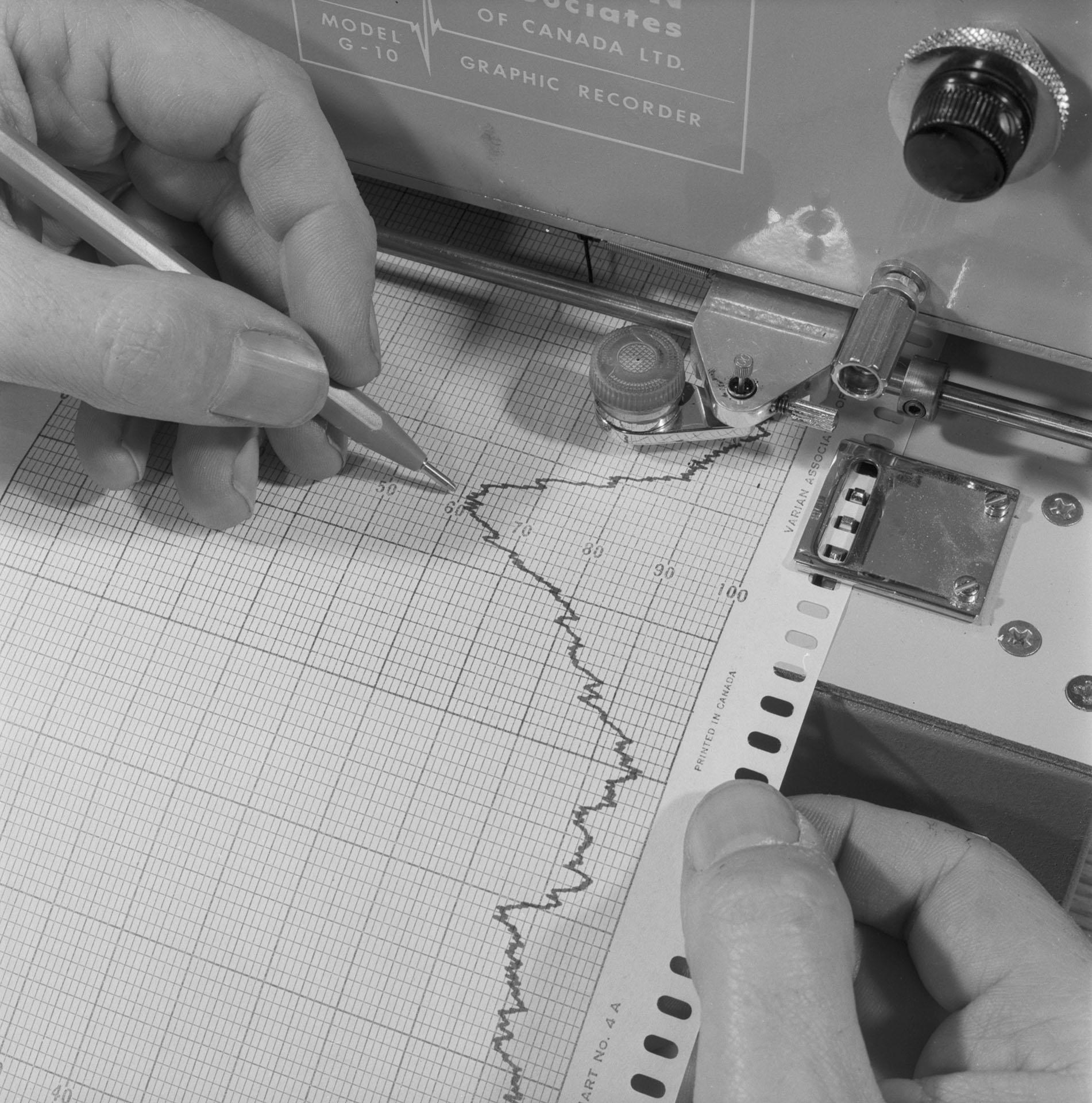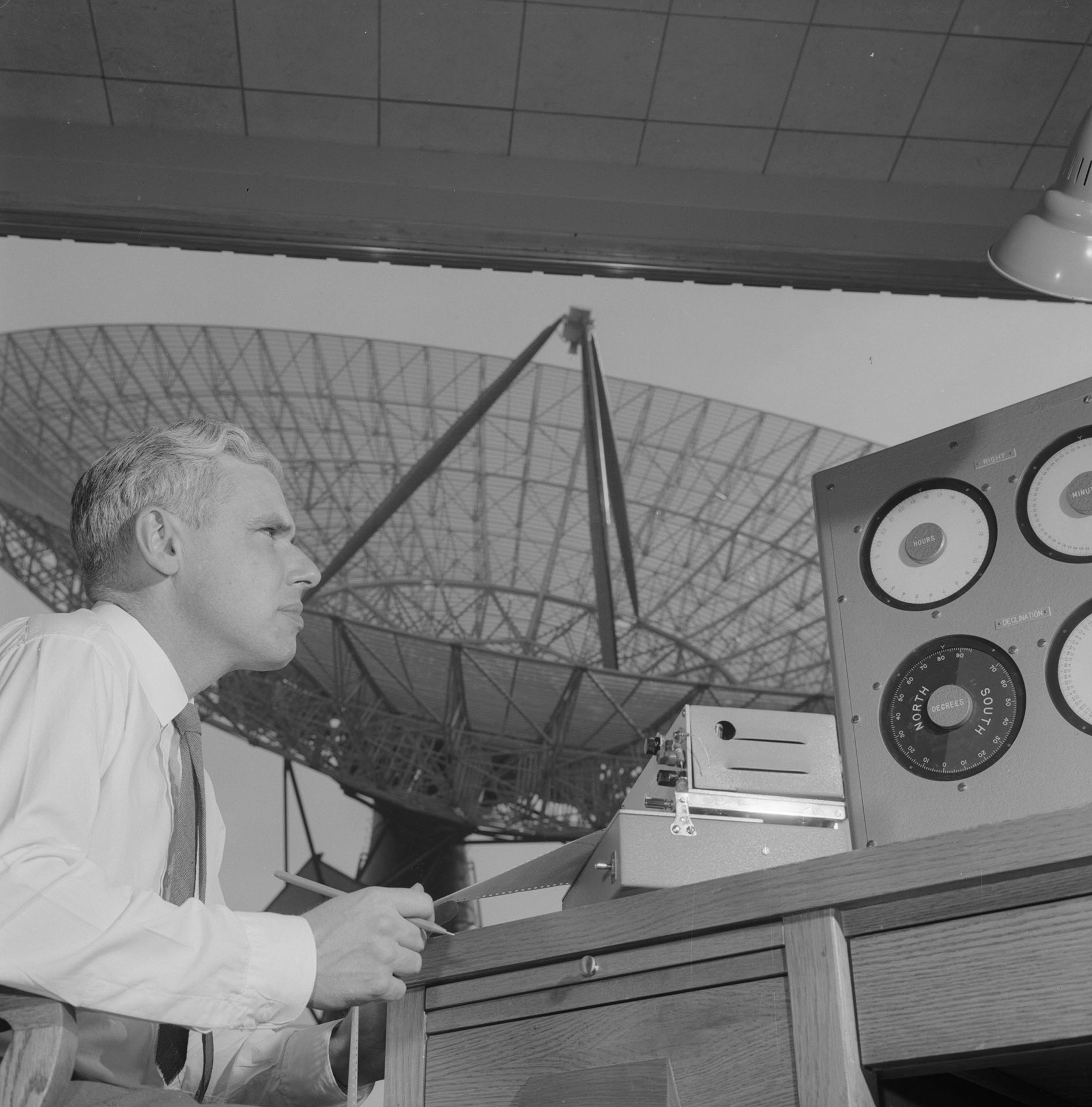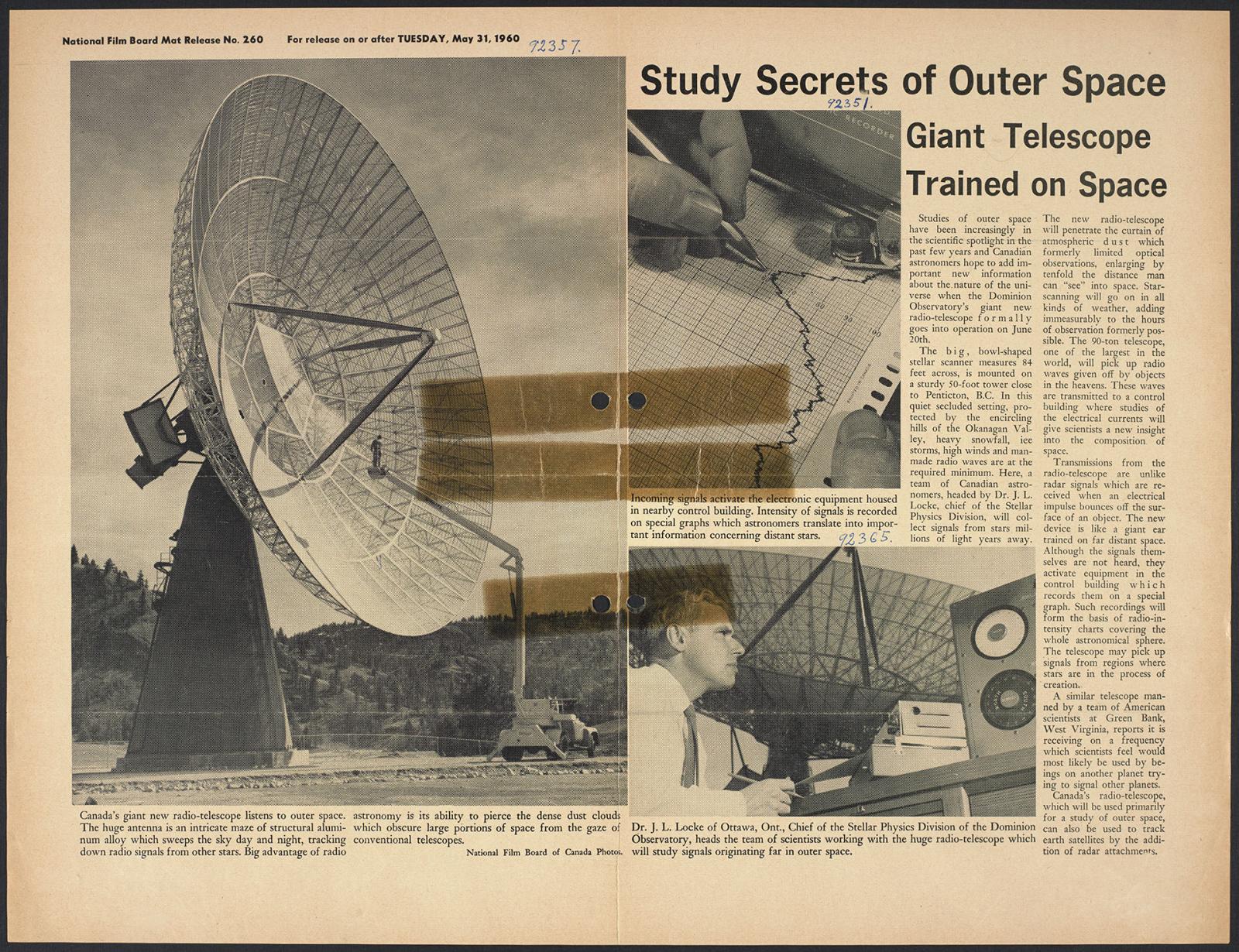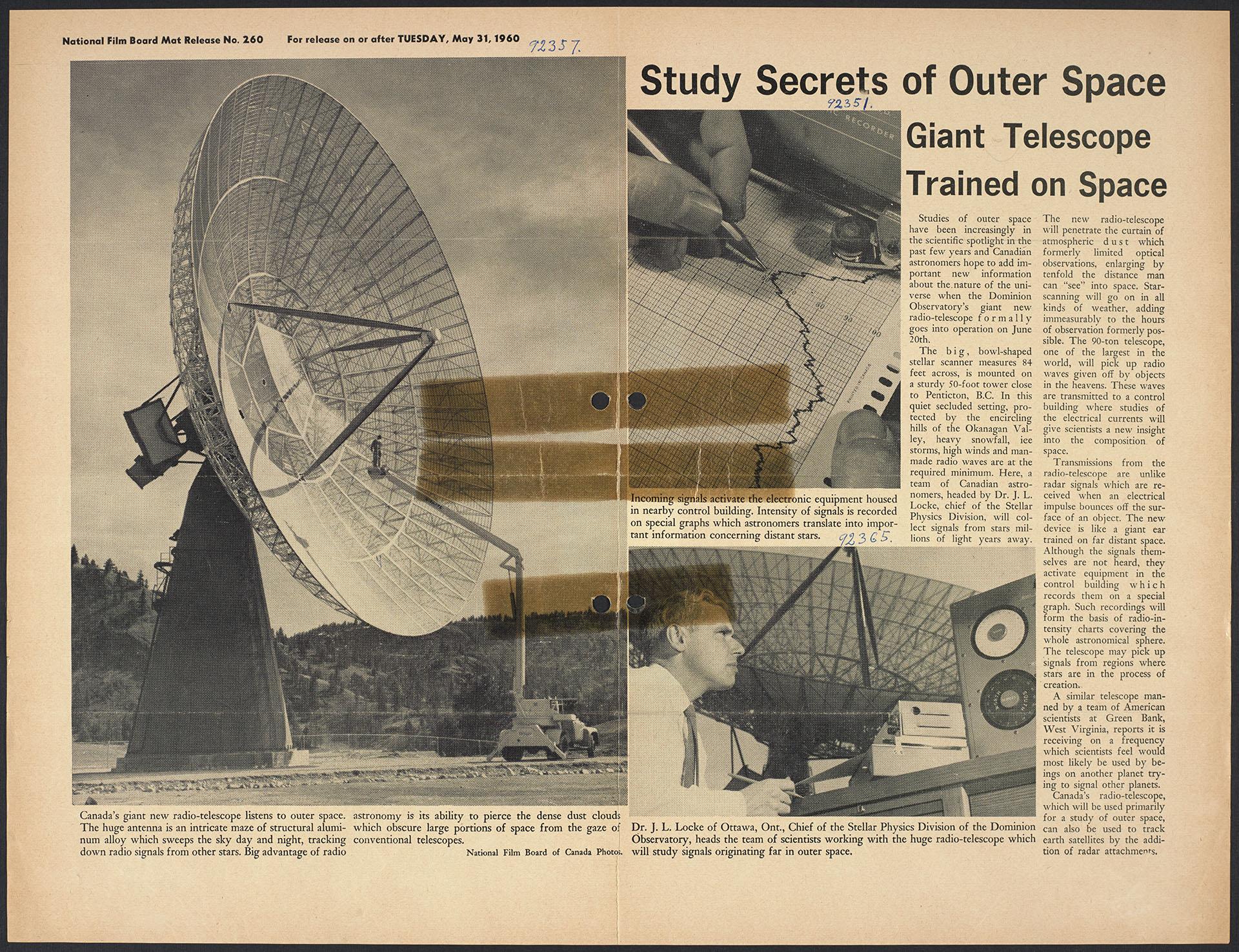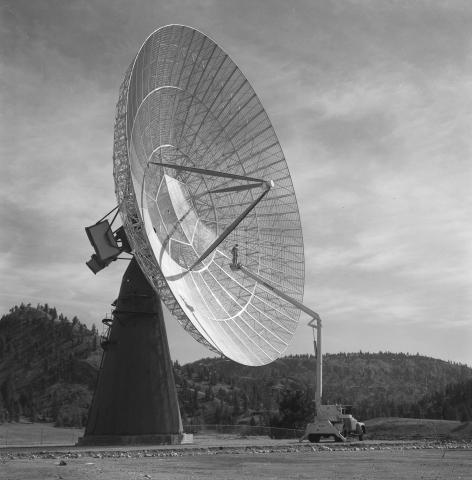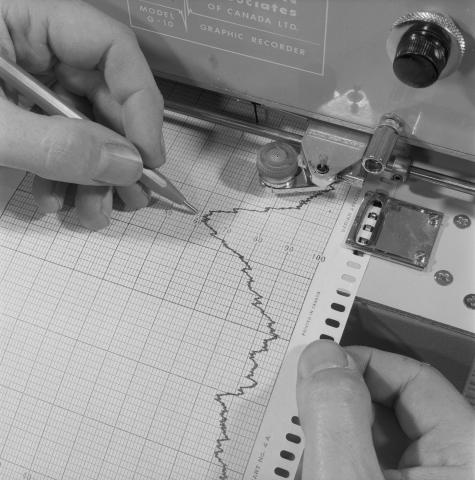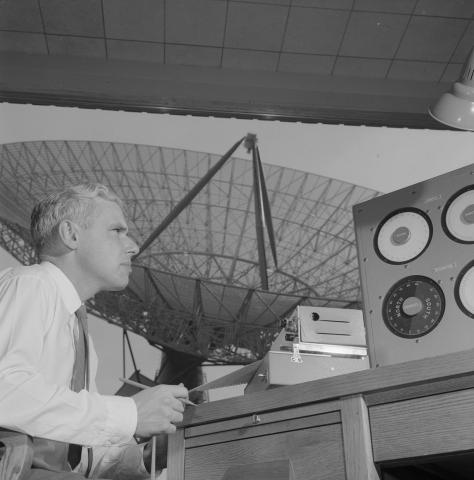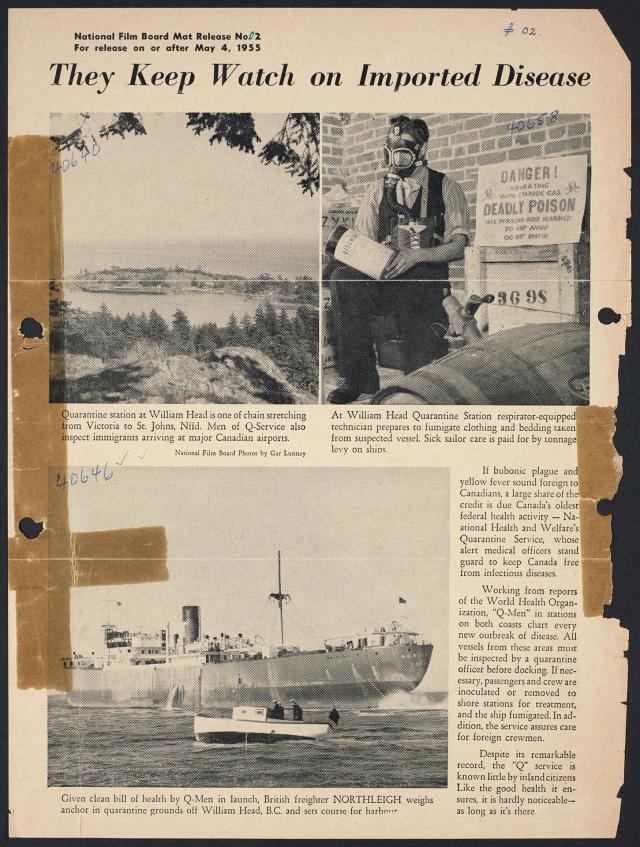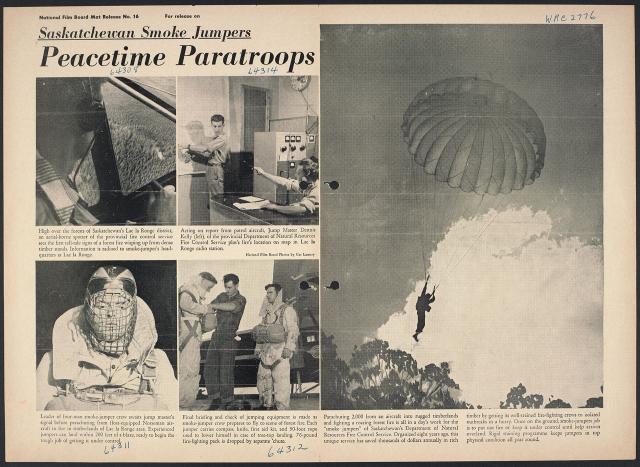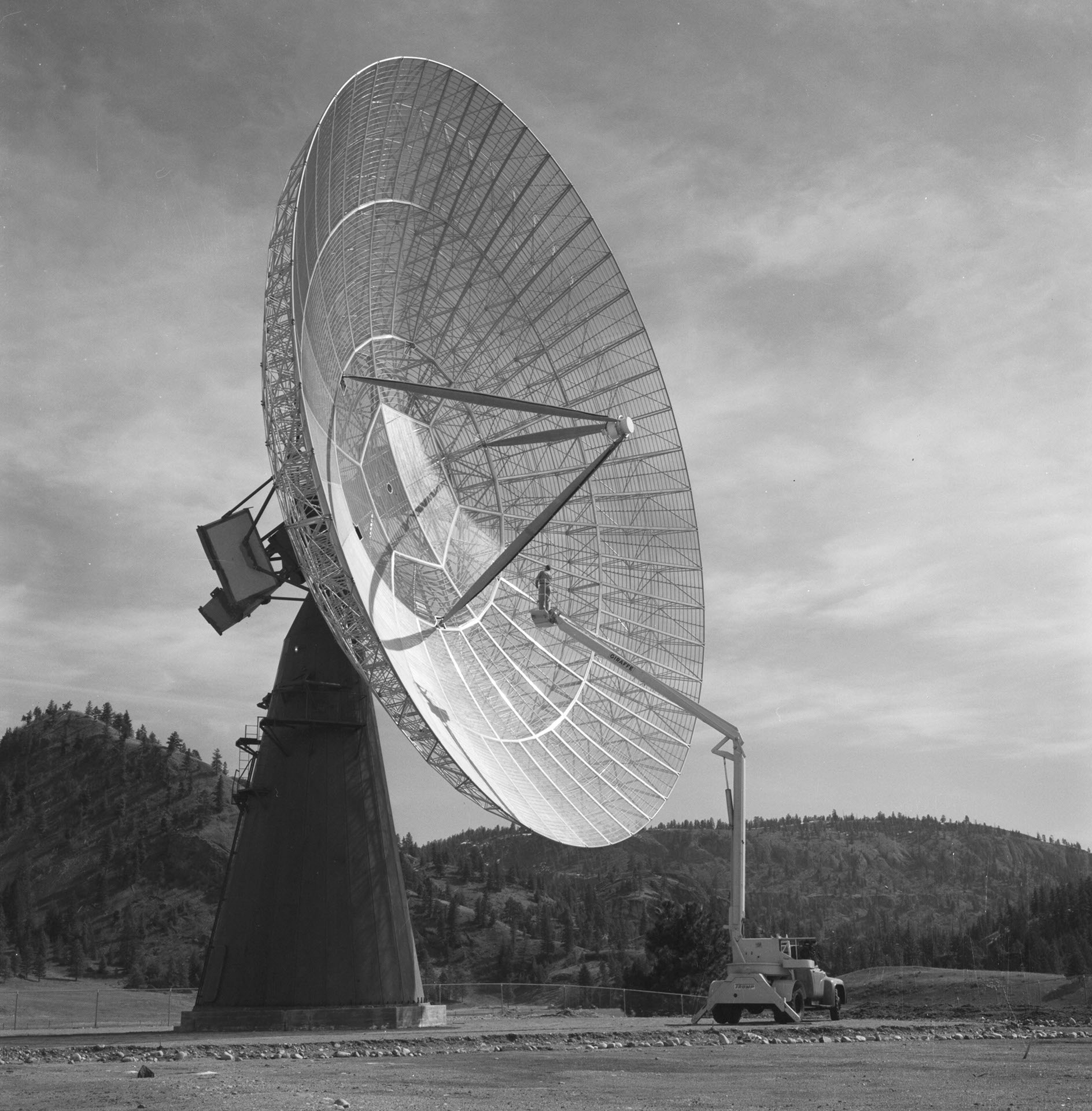
Photostory #260: Study Secrets of Outer Space: Giant Telescope Trained on Space
Photographers
,
Maker
National Film Board of Canada
Release Date
May 31, 1960
Collection
CMCP fonds
Credit Line
Canadian Museum of Contemporary Photography fonds, National Gallery of Canada Library and Archives
Main Text
Studies of outer space have been increasingly in the scientific spotlight in the past few years and Canadian astronomers hope to add important new information about the nature of the universe when the Dominion Observatory's giant new radio-telescope formally goes into operation on June 20th. The big, bowl-shaped stellar scanner measures 84 feet across, is mounted on a sturdy 50-foot tower close to Penticton, B.C. In this quiet secluded setting, protected by the encircling hills of the Okanagan Valley, heavy snowfall, ice storms, high winds and man-made radio waves are at the required minimum. Here, a team of Canadian astronomers, headed by Dr. J. L. Locke, chief of the Stellar Physics Division, will collect signals from stars millions of light years away. The new radio-telescope will penetrate the curtain of atmospheric dust which formerly limited optical observations, enlarging by tenfold the distance man can "see" into space. Star-scanning will go on in all kinds of weather, adding immeasurably to the hours of observation formerly possible. The 90-ton telescope, one of the largest in the world, will pick up radio waves given off by objects in the heavens. These waves are transmitted to a control building where studies of the electrical currents will give scientists a new insight into the composition, of space. Transmissions from the radio-telescope are unlike radar signals which are received when an electrical impulse bounces off the surface of an object. The new device is like a giant ear trained on far distant space. Although the signals themselves are not heard, they activate equipment in the control building which records them on a special graph. Such recordings will form the basis of radio-intensity charts covering the whole astronomical sphere. The telescope may pick up signals from regions where stars are in the process of creation. A similar telescope manned by a team of American scientists at Green Bank, West Virginia, reports it is receiving on a frequency which scientists feel would most likely be used by beings on another planet trying to signal other planets. Canada's radio-telescope, which will be used primarily for a study of outer space, can also be used to track earth satellites by the addition of radar attachments.
Subjects:
Locations:

